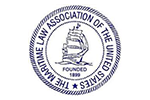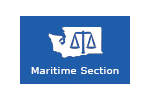Wrongful Death Attorneys
The Aborted Voyage of the Nanea
By John Merriam
I was his second lawyer. After firing his first one, and consulting with at least two more, Patrick Sheriff showed up in my office. He said he had a bad back and nightmares of drowning after trying to deliver a yacht to Honolulu from Seattle’s Fishermen’s Terminal. Patrick needed a lawyer to force the boat owner to pay him injury benefits under the federal maritime law because he was hurt at sea, beyond the reach of state-based systems of workers’ compensation. He fired his first lawyer because the boat owner still refused to authorize medical treatment.
Patrick was 35 years old and a long-time resident of Seattle. He was a tile layer by trade although, as I would find out later, he wasn’t licensed and bonded by the state of Washington. He did stone and ceramic jobs, making between $25,000 and $50,000 per year, depending upon how much he worked and whom he worked for. In November 2003 he was hired to set marble for a fireplace in a fancy condominium on Queen Anne Hill. The owner of the condominium (who will be called Grant for purposes of this article) promised Patrick $750 for the job. Patrick didn’t find out until after the job was over that Grant would pay him only $500. But by the time he realized he was getting stiffed for $250, Patrick had bigger things to worry about.
Working with Patrick was a guy named Mark, who was in charge of the remodel on Queen Anne Hill, and who also held a license from the Coast Guard to be the master of small vessels. Grant earlier sent Mark to South Africa to pick up a boat he had purchased, the M/Y (motor yacht) Scuttlebutt, a 75-foot sportfishing vessel of 100 tons. Mark motored the boat from South Africa, through the Panama Canal, to Seattle. When the boat arrived at Fishermen’s Terminal earlier that autumn, Grant renamed her “Nanea”.
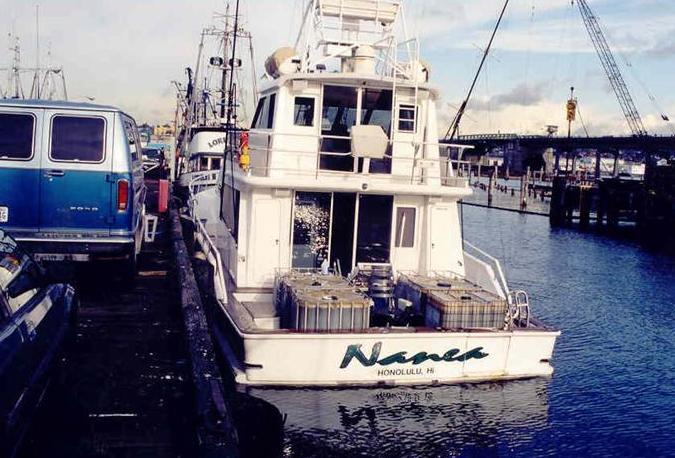
“Why ‘Nanea’?” I asked Patrick.
“I think it’s a Hawaiian word but I’m not sure what it means—something like having relaxed good times . . . ?” According to Patrick, Grant owned a tugboat company in Hawaii and asked Mark to deliver the Nanea to Honolulu after he finished up at the condominium. Mark needed two deckhands to help him make the delivery. Patrick later told me that Grant’s arrangement to fly a couple of his tug employees over from Hawaii fell through. He also told me that Grant got a good deal purchasing the Nanea because she was in need of maintenance. Mark and Patrick finished up Grant’s tile job.
Mark offered Patrick the yacht-delivery job and asked if Patrick knew of someone to serve as the second deckhand. The terms for the deckhands were $1,000 each and a plane ticket from Honolulu back to Seattle. The deckhands only had to do the cooking and stand a daily four-hour wheelwatch, each, while Mark slept. The deckhands could fish for marlin and tuna on the way. It sounded like a paid vacation! Patrick quit his regular tiling job and called his friend, Joe Williams, two days before the Nanea was scheduled to cast off.
“Hey, Joe, I’ve lined up a dream job delivering a yacht to Hawaii and she needs an extra hand.” Patrick described the job offer. Patrick met Joe in the late 1980s when they both worked aboard a factory-trawler in Alaska. Joe got hurt pretty bad and had quit commercial fishing. He had since gone to law school and had just passed the bar examination, but he didn’t have a job and was at loose ends. “I’m bringing my golf clubs and you could, too,” Patrick continued. “We wouldn’t have to come back right away. I’ve got a call in to a friend over there to see about lining up some tile work. The owner said we could live on the Nanea for a while if we stay in Honolulu.” Joe accepted immediately.
The Nanea departed from Fishermen’s Terminal on November 23, 2003, crewed by Mark, Patrick and Joe.
Patrick sat in my office and related the following tale:
“The trouble started four days later, 300 miles off the coast of Crescent City—near the border of California and Oregon—in the wee hours of Thanksgiving Day.
I was at the helm while Mark and Joe slept. At 0230 or 0300, the seas were 15-20 feet, with the wind picking up, and I guessed we were running into a storm. The port engine started running rough and then died. Then the starboard engine quit. Shortly after that the generator stopped running. I ran to wake up Mark and Joe. The weather got worse and it started to feel like a real storm. After the generator quit the emergency battery system kicked in, but the batteries went dead after a few minutes and the lights went out. It was completely dark. I tried to radio an SOS, but without power the radio was dead too. The weather kept picking up. My stomach had a vacant feeling, like it was empty and I was all alone.
“Mark and I got a flashlight and saw that the fuel lines were totally clogged with what looked like fudge. Some sort of fungus had been growing in the fuel tanks. I asked Mark if the fuel tanks had been cleaned before we left Seattle. He said they hadn’t, nor had the emergency batteries been replaced. Mark said Grant was waiting for Hawaii before doing maintenance. That pissed me off. I used the anger to get me through what came next.
“The afterdeck of the Nanea held extra diesel fuel in plastic bladders to get us to Hawaii. I ran a garden hose from one of the fuel bladders directly to the generator. After a few hours we were both completely soaked with diesel but we got the lights back on. That made it easier to get clean fuel to one of the engines. Mark and I ran another section of garden hose directly to the fuel filter for the port engine, as the storm tossed us about. We finally got one engine running.
“The engine space was only three-and-a-half feet high.”
“How tall are you?” I interrupted.
“6’2,” he responded. “I was down there for a long time, hunched over. I had to run the hose back and forth between the port and starboard engines. There was no time to think about being scared. Every time the fuel filter got clogged on one engine, I would switch to the other, then clean the clogged filter. I had to repeat that process every 30-60 minutes. My back was cramping but there was an emergency to deal with. Diesel was everywhere. Once, while going down the steps to the engine room, my feet shot out and I landed on my back. That really hurt, but I kept working. There was no time to think about being injured, either.”
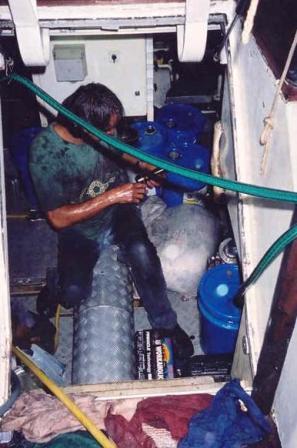
“Where were Mark and Joe during this time,” I asked
“Joe told me he was really scared, and pretty sure he was going to drown. His dream job turned into a nightmare. Joe has a steel rod in his neck. He couldn’t bend over to go in that cramped engine space. He stayed at the wheel, trying to keep our bow into the storm. That was a hard job. Before we got the port engine running, it was impossible. Mark helped me with the fuel lines and filters. After we got propulsion, I told him my back was fried and I couldn’t stay in the engine room anymore. Mark said he would take care of the situation, switching back and forth between fuel filters on the port and starboard engines. But he gradually started to lose it from the stress and fatigue and I had to keep checking on him. In addition to the ongoing panic situation, I think he was worried about his Coast Guard license. As the hours and days passed, he got no sleep and became more and more irrational.
“We spent most of Thanksgiving without propulsion. We got out the survival suits and were ready to put them on at a moment’s notice. The storm finally started slacking off but I was still afraid one of the waves would come over the stern. We had the hatch to the engine space open so we could run the garden hose directly to the engines from the fuel bladders. A couple of good-sized waves would have filled the engine space and probably sent us to the bottom. Even after we got under way with one engine, we were going so slow that a following sea could have overtaken us.
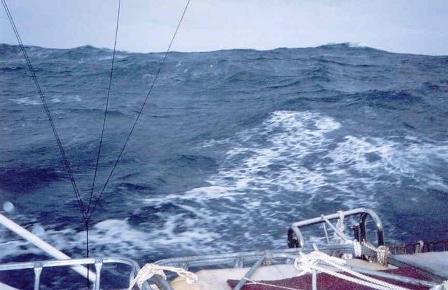
“And talking about a following sea, I didn’t notice there was no hydrostatic release for the life raft on top of the wheelhouse. Joe thought we would have been better off if we’d abandoned the Nanea and gotten into the life raft. He told me later that the raft was lashed in place with nylon line. That meant that if we capsized, the raft would not surface because it wouldn’t break free. Even though the Nanea is a 75-footer, I’ve heard of bigger boats capsizing after they broached in a following sea.
“Limping along at three or four knots, it took us three or four days to get back to Cape Flattery and the Strait of Juan de Fuca. We contacted the Coast Guard after the radio was working. They kept in contact with a call every hour, and boarded us for a safety inspection in Neah Bay after we anchored to spend the night.
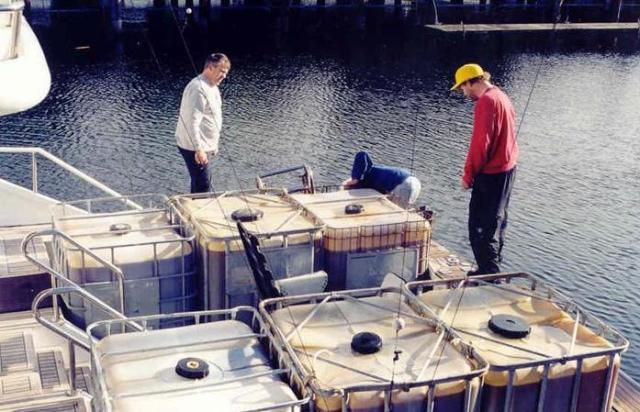
“We spent the next night tied to a dock in Port Angeles. Joe and I went to a tavern and got drunk.
“Our so-called voyage ended where it started, at Fishermen’s Terminal. I think that was December 3rd. Grant refused to pay us at first, saying we hadn’t completed the delivery. Joe got another lawyer, my first one, to write a letter demanding our wages. Grant paid us $1,000 each but there’s been bad blood ever since. When Joe and I went back to the Nanea to get our gear, Mark had it stacked on the dock. He said Grant told him to call the cops if we set foot on the boat. And to pour salt on my wounds, Mark told me that Grant said he wasn’t paying the last $250 for the tile job at his condo because I hadn’t earned it.
“That’s the last contact I had with the boat, Grant or Mark.”
“Did the Nanea ever make it to Hawaii,” I asked.
“I think it’s still here, at Fishermen’s Terminal.”
“What do you want me to do?”
“I want a doctor to look at my back. My first lawyer totally screwed up the case!”
“I’ll see what I can do.” I handed Patrick a fee agreement.
Patrick’s case was complicated by the fact that he was a stoic and didn’t seek medical treatment for almost two months after he hurt his back. Even though he had a serious injury, Patrick hoped he would be cured by Father Time. The problem was compounded when his first lawyer demanded only wages from Grant, making no mention of injury for more than two months. That allowed the insurance company lawyer to argue that Patrick hurt his back before or after he was on the Nanea. In the lawsuit filed in federal court in Seattle—assigned to Judge Thomas Zilly—b y Patrick’s first lawyer, I made three written motions to get Patrick authorization to see a doctor. All were denied. Judge Zilly ruled that the facts were in dispute, and that a decision needed to await trial—scheduled for September 2005. More than a year after Patrick hurt his back, I worked out a compromise with the insurance company lawyer, whereby Patrick could receive limited medical attention.
I also amended the lawsuit to claim the $250 Patrick had been stiffed on the tile job. It turned out that contractors like Patrick are not allowed to sue anybody unless they are licensed and bonded by the state of Washington. I did not know that, until receiving an angry letter from the insurance company lawyer. Tail between my legs, I withdrew the claim for $250.
In the meantime, Patrick told me that Grant finally got the fuel tanks cleaned out, “so he could take his wealthy friends out to have cocktails and watch the 2004 Seafair races on Lake Washington.” I later received a legal notice from a different maritime lawyer, asserting a lien against the Nanea because the workers cleaning the fuel tanks hadn’t been paid.
Patrick’s doctor, finally paid for by Grant’s insurance company, told him he wasn’t fit for tiling anymore and that he should find a new career. I jousted with the insurance lawyer for over a year, until just before trial. I knew I had some problems with my case, not the least of which was the delay in Patrick going to a doctor. Given all the variables, I thought that $85,000 would be a fair settlement. The insurance lawyer agreed with me and said that he would recommend an $85,000 settlement to Grant and the insurance underwriters if I would do the same to Patrick.
Grant and the insurance people told their lawyer that they would pay $85,000—and not a dime more!—to settle the case. Patrick told me that he would accept $85,000, but only if it came with an apology from Grant for holding up his medical treatment and an acknowledgment that Patrick helped save Grant’s boat.
“My client will never apologize to yours!” The insurance lawyer sounded outraged that I would even suggest such a thing.
“I recommended to my client that he settle for the 85 grand, like we agreed, but he says he doesn’t care about the money and that an apology is more important. He’s adamant. If Grant doesn’t apologize, it looks like we’re going to trial.”
The insurance lawyer huffed and puffed about what would happen to Patrick at trial, said I was being totally unreasonable by allowing my client to have such ridiculous expectations, and then hung up.
There was no jury demand so the judge would decide the case. A few days before the scheduled start of trial, Judge Zilly called the lawyers in for a pre-trial conference in the new Federal Courthouse at 7th & Stewart in Seattle. Sitting before a federal judge—appointed for life—is a pretty intimidating experience for most lawyers. Judge Zilly didn’t exactly ‘read us the Riot Act’ about settling the case, but he made it clear that at trial neither side would do as well as they expected. His less-than-cryptic message was: ‘go to trial at your peril . . . .’
As we walked out of the judge’s chambers, the insurance lawyer turned to me. “We’ll pay $90,000 to settle this case—no apology.”
I was surprised that the insurance company was offering $5,000 more than its ‘top dollar’ to settle the case. “I’ll try to make it happen,” I promised as we left the courthouse.
I was ready not just to twist Patrick’s arm but to break it, if he didn’t accept $90,000 to settle the case without an apology. The newspapers at the time were full of stories about a Seattle vice cop who got busted for corruption. After his lawyer got the case dismissed and the Sheriff Department guaranteed him a pension, the cop told a reporter: ‘Money is the best way to say you’re sorry.’ I reminded Patrick of that sentiment and of what Judge Zilly had said about going to trial. He accepted the settlement offer.
Patrick sat in my office a few days later, signing papers to end the lawsuit for $90,000. “Grant could have settled this case for $85,000 if he’d written me a short note apologizing for what happened. Does being rich mean you don’t have to say you’re sorry?” I didn’t answer him.
The case is Sheriff v. Nanea , CV04-0223Z (W.D. Wash.). Plaintiff was represented by John Merriam. Defendants were represented by Tom Waller of Bauer, Moynihan & Johnson. The photographs in this article are courtesy of Patrick Sheriff and Joe Williams.
John Merriam is a former merchant seaman, now a sole practitioner at Fishermen’s Terminal representing all types of seamen on wage and injury claims.









